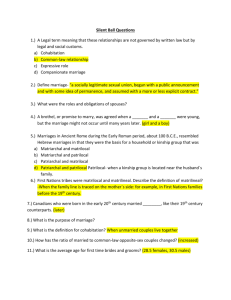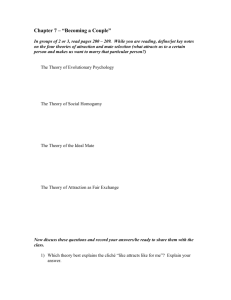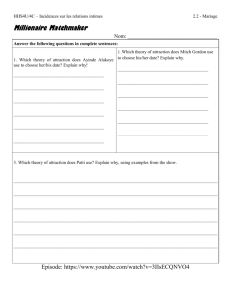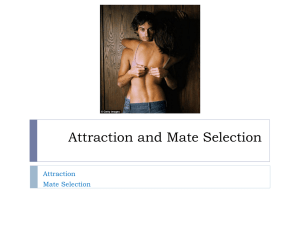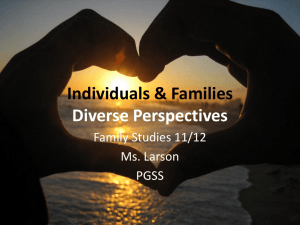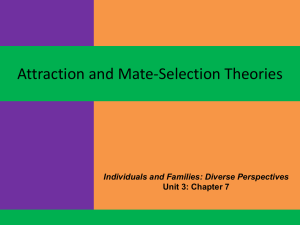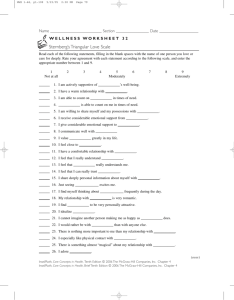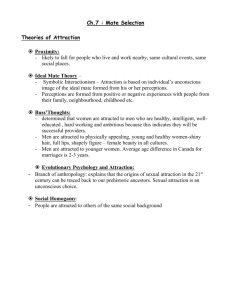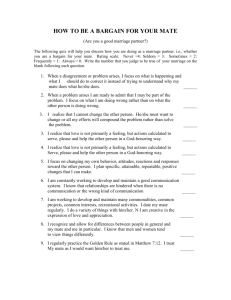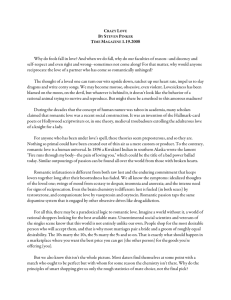chapter 7 – becoming a couple - individual
advertisement
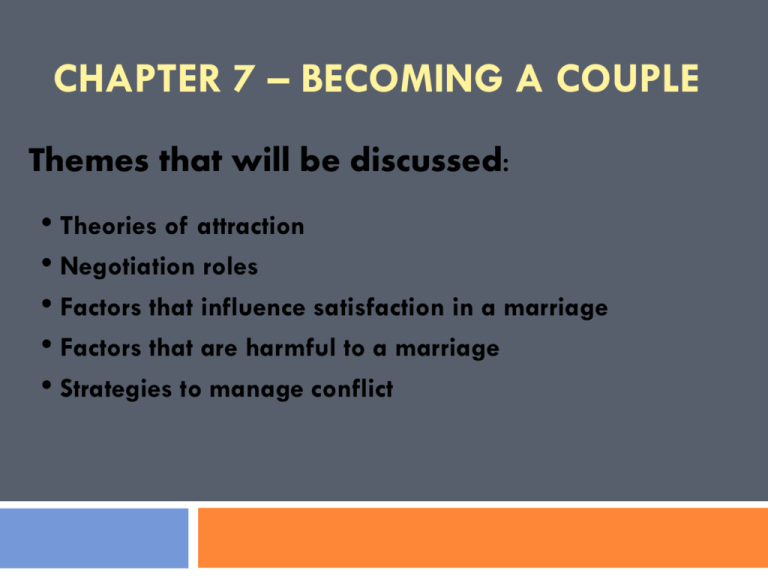
CHAPTER 7 – BECOMING A COUPLE Themes that will be discussed: • Theories of attraction • Negotiation roles • Factors that influence satisfaction in a marriage • Factors that are harmful to a marriage • Strategies to manage conflict THEORIES OF ATTRACTION AND MATE SELECTION Social Homogamy “Individuals are attracted to people from similar social and cultural backgrounds so that they share similar social, cultural, and economic values and lifestyle expectations” THEORIES OF ATTRACTION AND MATE SELECTION Social Homogamy Individual will seek a partner with SIMILAR: • age/race • ethnic background • political views • family values • religion • socio-economic background • education THEORIES OF ATTRACTION AND MATE SELECTION Ideal Mate Theory “Everyone has an unconscious ideal with which they compare a person to find him or her attractive or to make the immediate judgement of the person as lovable” THEORIES OF ATTRACTION AND MATE SELECTION Ideal Mate Theory • Supports the idea of “love at first sight” • Perceptions formed from experiences in the past Individual already knows what they’re looking for in a mate in terms of: • physical appearance • cultural beliefs • socio-economic characteristics THEORIES OF ATTRACTION AND MATE SELECTION Exchange Theory “ Suggests that younger, more attractive women have greater resources to offer older, successful men” • Worldwide, older men marry younger women • In Canada, age difference is 2 years (lowest worldwide) • In Iran, age difference is 5 years (among the highest) • Women now have increased financial potential and extended fertility activity ACTIVITY The top ten characteristics one looks for in a partner Characteristic Ranking Communication Religion Values Love Honesty Humour Compatibility Respect Kindness Dependability ROMANTIC LOVE & STERNBERG'S LOVE TRIANGLE What is love? Romantic love has 3 aspects: 1) Passion = strong feeling of sexual desire for another, and develops the most quickly 2) Intimacy = each individual shares their experiences, thoughts, and feelings with another and becomes willing to meet the other’s psychological needs 3) Commitment = individuals accept reciprocal roles and mutual interdependence STERNBERG'S LOVE TRIANGLE NON-LOVE No aspects of passion, intimacy or commitment. EX: a casual friend ROMANTIC LOVE Combination of intimacy and passion. Level of commitment is lacking, and may be in its early stages FRIENDSHIP A relationship based solely on intimacy: Intimacy in the form of trust by sharing personal thoughts and feelings INFATUATION Relationship based solely on sexual desire. Individuals do not connect on an emotional level. COMPANIONATE LOVE Passion has slowly disappeared or was never present. EX: A marriage where passion is no longer present OR A Best Friend
